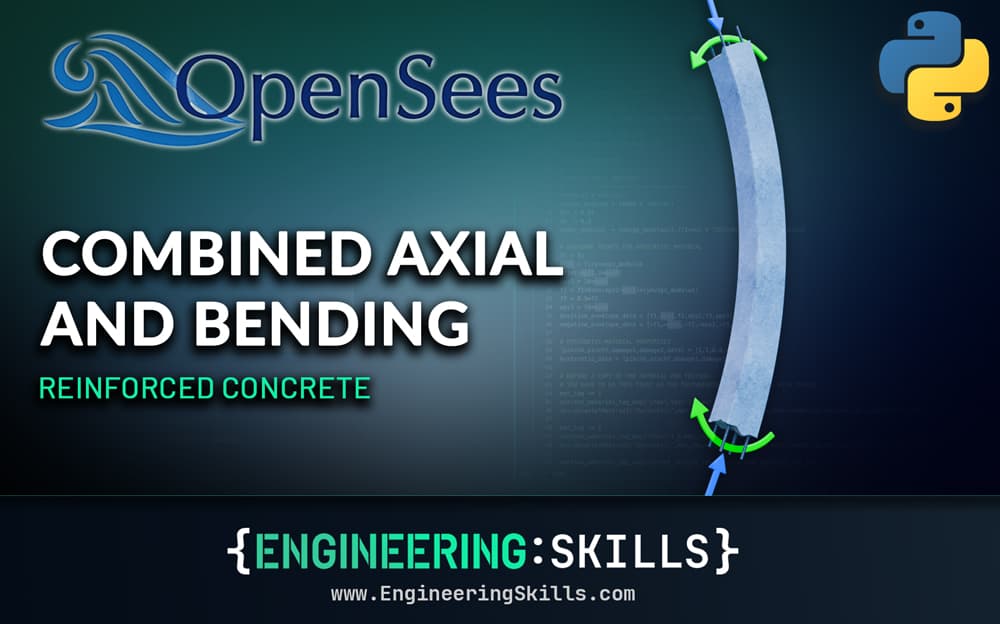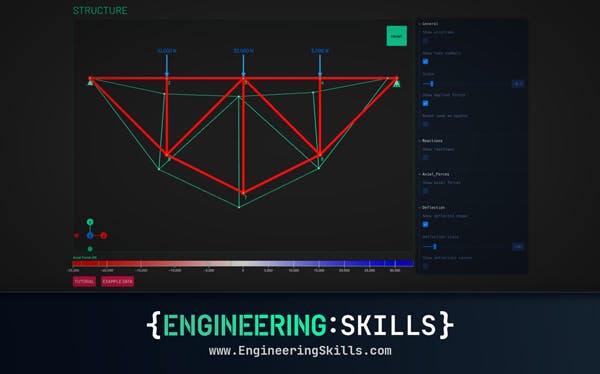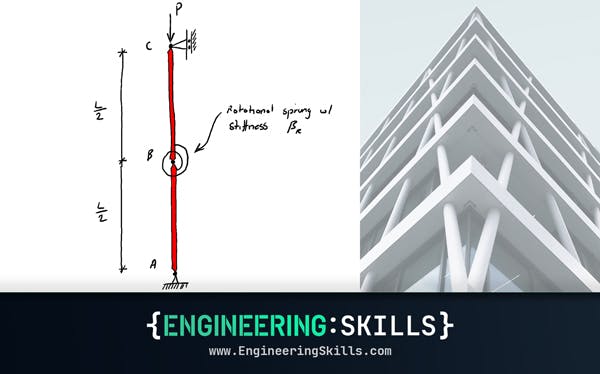Non-linear Analysis of Reinforced Concrete Sections Under Combined Axial and Bending Loads
![[object Object]](/_next/image?url=%2Fimages%2Fauthors%2Fhisham_al_hanoun.jpg&w=256&q=75)
In this tutorial, we will build on our previous investigation of steel sections subjected to combined axial and bending loads, and expand to consider fiber-based modelling of reinforced concrete sections using OpenSeesPy.
Hisham again presents his modular framework for material testing, fiber section modelling, and non-linear response evaluation. The modelling presented in this tutorial provides an excellent foundation for more advanced analyses of reinforced concrete elements.
After completing this tutorial, you will be able to develop a more realistic representation of reinforced concrete section behaviour under combined loading. This tutorial is an excellent introduction for anyone looking to get started with non-linear analysis of reinforced concrete sections in OpenSeesPy.
Tutorial breakdown
📍 1.0 Introduction
We begin by refreshing some of the key concepts that we'll be using throughout the tutorial with a particular emphasis on the non-linear behaviour of reinforced concrete sections.
📍 2.0 Recap of the roadmap and helper functions from part 1
Since we're deploying the same methodology previously applied to steel sections, we'll be making use of many of the same utility functions. So, we'll breifly summarise these along with our overall development roadmap for the tutorial.
📍 3.0 Defining Materials and the Fiber Section Model
In this section, we'll start by defining the materials for the reinforcing steel and the concrete. Then we can use these materials in our fiber section modelling to build up a realistic representation of the reinforced concrete section.
📍 4.0 Moment-Curvature Analysis
In this section, we'll perform a moment-curvature analysis which characterises the section's response under combined axial and bending loads. This will be repeated for a range of axial loads to produce the P-M interaction diagram highlighting the interaction between axial force and bending moment.
📍 5.0 Recap and what next?
Finally, we recap some of the highlights and consider where we go next!
📂 Make sure to download the Jupyter Notebook (linked above) to run locally as you read through the tutorial.

1.0 Introduction
This tutorial presents a step-by-step implementation of Moment–Curvature Analysis and P–M Interaction for a Reinforced Concrete (RC) rectangular section using OpenSeesPy (version 3.5.1.3).
This tutorial will guide you through the practical steps in fiber-based modelling, RC material constitutive laws, and non-linear section response analysis using OpenSeesPy. The methodology presented establishes a systematic basis for assessing the behaviour of RC sections. This will provide insight into the interaction between axial and bending forces in reinforced concrete members.
We follow the same process that was followed in my previous tutorial (Non-linear Analysis of Steel Sections Under Combined Axial and Bending Loads). In that tutorial, we focused on steel sections. Here we apply the exact same methodology and approach to reinforced concrete sections.
You can think of each tutorial as being one part in a two-part series:
-
Part 1: Non-linear Analysis of Steel Sections Under Combined Axial and Bending Loads
-
Part 2: This tutorial…the same but for reinforced concrete sections
If you haven’t worked through the previous tutorial, start there before following this tutorial.
In structural engineering practice, elements such as reinforced concrete columns, piers, and beams are frequently subjected to combined axial and bending loads, especially in critical structures like high-rise buildings and bridges.
Understanding how these sections behave beyond the elastic range is essential for designing safe, efficient, and resilient systems. This is particularly important in scenarios involving seismic loading, extreme events, or performance-based design, where traditional linear analysis does not capture the full picture of how a member might fail or deform.
Structural engineers often need to assess the non-linear response of RC sections under such conditions. The moment-curvature analysis and P-M interaction are fundamental tools in this assessment, providing insights into:
- Stiffness degradation due to concrete cracking and steel yielding
- Axial load influence on moment capacity
- Ultimate strength, ductility, and confinement effects of the section
After completing this tutorial you will be comfortable using fiber-based modelling in OpenSeesPy to evaluate these behaviours accurately, enabling a more realistic representation of reinforced concrete section performance.
All Access Membership
Learn, revise or refresh your knowledge and master engineering analysis and design
Access Every Course and Tool
- Over 1140 lectures & over 234 hours of HD video content
- Access member-only 'deep dive' tutorials
- Access all downloads, pdf guides & Python codes
- Access to the StructureWorks Blender addon + updates
- Packed development roadmap of courses & tutorials
- Price Guarantee – avoid future price rises as we grow
- Priority Q&A support
- Course completion certificates
- Early access to new courses
Featured Tutorials and Guides
If you found this tutorial helpful, you might enjoy some of these other tutorials.
Free Truss Calculator – Quick Start Guide
An easy to use free truss calculator you can use to find member axial forces, reactions forces and deflections in 2D trusses

Dr Seán Carroll
Steel Truss Design to Eurocode 3
Learn how to design one of the most common structural forms - the steel truss

Callum Wilson




